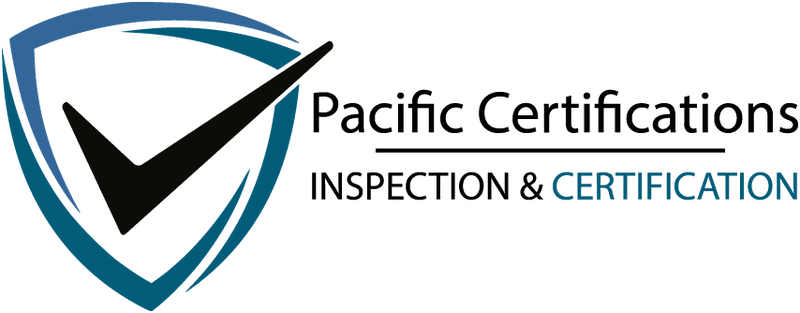
What is BS EN 13480-1 – Metallic Industrial Piping Metallic Industrial Piping?
BS EN 13480-1-Metallic industrial piping specifies the design and fabrication of metallic industrial piping systems. It falls under the category of standards related to pressure equipment and is part of the broader EN 13480 series of standards, which covers various aspects of metallic piping systems used in industrial applications. These standards are used to ensure the safe and reliable operation of piping systems in various industries, including oil and gas, chemical, petrochemical, and power generation.
Here’s a breakdown of what BS EN 13480-1 covers:
- Scope: BS EN 13480-1 specifies the general design and manufacturing requirements for metallic industrial piping systems. It applies to piping systems used for the conveyance of fluids within the temperature and pressure ranges specified in the standard.
- Materials: The standard provides guidance on selecting and specifying materials for piping components, including pipes, fittings, and flanges. It outlines the requirements for materials’ mechanical properties, chemical composition, and other factors relevant to their suitability for the intended application.
- Design: BS EN 13480-1 outlines the principles and requirements for designing metallic piping systems. This includes considerations for pressure, temperature, loads, and other relevant factors. The standard provides guidelines for calculating wall thickness, selecting appropriate dimensions, and ensuring the structural integrity of the piping system.
- Fabrication: It covers the fabrication processes and requirements for metallic piping components, ensuring they meet the design specifications and maintain the necessary quality standards. This includes welding procedures, inspection, and testing of the fabricated components.
- Installation: While BS EN 13480-1 primarily focuses on design and fabrication, it also provides some guidance on the installation of metallic piping systems, including considerations for alignment, support, and protection against external factors.
- Testing and Inspection: The standard outlines requirements for testing and inspecting piping systems to verify their integrity and compliance with the design and manufacturing standards. This includes non-destructive testing (NDT) methods, pressure testing, and other inspection procedures.
- Documentation: Proper documentation is essential for traceability and compliance. BS EN 13480-1 specifies the information that should be included in documentation related to the design, fabrication, and inspection of metallic piping systems.
Overall, BS EN 13480-1 is just one part of the EN 13480 series, and there are additional parts that provide more specific requirements for different aspects of metallic industrial piping systems. These standards are widely used in Europe and have an impact on the design, construction, and operation of industrial piping systems in the region.
What are the requirements for BS EN 13480-1?
BS EN 13480-1-Metallic industrial piping specifies various requirements for metallic industrial piping systems. These requirements cover design, materials, fabrication, testing, inspection, and documentation.
Below are more detailed breakdown of some of the key requirements specified in BS EN 13480-1:
- Scope and Field of Application:
- The standard defines the scope and field of application, outlining that it applies to metallic industrial piping systems within specified temperature and pressure ranges.
- Materials:
- Requirements for selecting materials based on their mechanical properties, chemical composition, and suitability for the intended application.
- Guidelines for material testing and verification.
- Considerations for material traceability.
- Design:
- Principles and requirements for designing piping systems, including calculations for wall thickness, dimensions, and pressure/temperature ratings.
- Considerations for structural design, including support, expansion, and flexibility.
- Requirements for pipe bends, branch connections, and transitions.
- Fabrication:
- Welding procedures, qualifications, and acceptance criteria.
- Fabrication processes, including cutting, bending, forming, and heat treatment.
- Guidelines for dimensional tolerances and surface finish.
- Installation:
- Guidelines for the installation of piping systems, including alignment, support, and anchorage.
- Protection against external factors, such as corrosion and mechanical damage.
- Testing and Inspection:
- Requirements for various types of testing, including non-destructive testing (NDT), pressure testing, and visual inspection.
- Acceptance criteria for testing and inspection results.
- Documentation of testing and inspection procedures.
- Documentation:
- Requirements for documentation related to the design, fabrication, and inspection of piping systems.
- Documentation of materials, welding procedures, inspection records, and test results.
- Ensuring proper traceability of components and materials.
- Quality Assurance:
- Implementation of quality assurance and quality control procedures throughout the fabrication and installation process.
- Compliance with relevant codes and standards.
- Safety and Reliability:
- Ensuring that piping systems are designed and fabricated to meet safety and reliability standards.
- Considerations for emergency shutdown, leakage prevention, and other safety-related aspects.
- Corrosion Protection:
- Measures to protect the piping system against corrosion, including coating, cathodic protection, and material selection.
- Environmental Considerations:
- Requirements for environmental protection, including guidelines for avoiding contamination of soil and water.
- Compliance with Applicable Standards:
- Ensuring compliance with all relevant national and international standards, codes, and regulations.
It’s important to note that BS EN 13480-1 is just one part of the EN 13480 series, and it provides general requirements for metallic industrial piping systems. Depending on the specific application and materials used, additional parts of the EN 13480 series need to be consulted to ensure comprehensive compliance with all relevant standards and specifications.
What are the benefits of BS EN 13480-1?
BS EN 13480-1-Metallic industrial piping specifies the requirements for metallic industrial piping systems, offers several benefits to industries and organizations involved in the design, fabrication, and operation of such piping systems. These benefits include:
- Enhanced Safety: Compliance with BS EN 13480-1 helps ensure that metallic industrial piping systems are designed, fabricated, and installed with a strong focus on safety. This reduces the risk of accidents, leaks, and failures, which can lead to personal injury, environmental damage, and property loss.
- Standardization: The standard provides a common set of requirements and guidelines for standardization which simplifies communication, procurement, and quality control processes, making it easier to work with different suppliers and contractors.
- Reliability: Metallic piping systems designed and fabricated according to BS EN 13480-1 are more likely to be reliable and have a longer service life. This reliability is crucial for industries where downtime or system failures can have significant financial and operational consequences.
- Compliance with Regulations: Many industries are subject to regulations and safety standards that require compliance with recognized codes and standards like BS EN 13480-1. Adhering to these standards helps organizations meet legal requirements and avoid potential penalties.
- Quality Assurance: The standard emphasizes the importance of quality assurance and control throughout the entire lifecycle of a piping system. This leads to a higher level of quality in materials, fabrication processes, and inspection procedures.
- Interoperability: When different components and systems comply with the same standard, it becomes easier to integrate and interface various parts of an industrial process. This can be particularly important in complex industrial facilities.
- Cost Efficiency: While there may be initial costs associated with compliance and documentation, the long-term benefits often outweigh these expenses. Reduced maintenance and downtime, as well as increased system longevity, can result in cost savings over the operational life of the piping system.
- Documentation and Traceability: BS EN 13480-1 mandates comprehensive documentation, including material records, inspection reports, and test results. This documentation enables better traceability and accountability throughout the supply chain and project lifecycle.
- Environmental Protection: The standard includes considerations for environmental protection, such as corrosion prevention measures and guidelines for preventing soil and water contamination. This helps minimize the environmental impact of piping systems.
- Global Recognition: BS EN 13480-1 is part of the European EN 13480 series, but its principles and requirements are widely popular internationally. This global recognition can be advantageous for organizations that operate on a global scale or export their products and services.
- Risk Mitigation: By following established standards and best practices, organizations can reduce the risks associated with design and fabrication errors, which can lead to costly rework and delays.
Overall, BS EN 13480-1 provides a framework for the safe and efficient design and fabrication of metallic industrial piping systems. By adhering to this standard, organizations can benefit from improved safety, reliability, and compliance with regulatory requirements, ultimately contributing to the success of their projects and operations.
Who needs BS EN 13480-1-Metallic Industrial Piping?
BS EN 13480-1 specifies the requirements for metallic industrial piping systems, is relevant to a wide range of stakeholders in various industries and sectors.
Here’s a list of individuals, organizations, and professionals who may need to consider and use BS EN 13480-1:
- Engineers and Designers: Engineers and designers responsible for the design and specification of metallic industrial piping systems should be familiar with BS EN 13480-1. They need to ensure that the systems they design comply with the standard’s requirements for safety, reliability, and performance.
- Manufacturers and Fabricators: Companies that manufacture and fabricate metallic piping components and systems must adhere to the standard’s guidelines for material selection, fabrication processes, quality control, and testing.
- Contractors and Construction Companies: Contractors and construction firms involved in the installation and assembly of metallic industrial piping systems should follow BS EN 13480-1 to ensure proper installation, alignment, and support of piping components.
- Quality Assurance and Control Personnel: Professionals responsible for quality assurance and control play a critical role in ensuring compliance with the standard’s requirements throughout the entire lifecycle of a piping system, from material procurement to installation.
- Maintenance and Operations Teams: Teams responsible for the maintenance and operation of industrial facilities that utilize metallic piping systems benefit from the standard by ensuring that these systems are designed and fabricated for long-term reliability and safety.
- Regulatory Authorities: Regulatory bodies and government agencies may reference BS EN 13480-1 or similar standards when establishing safety regulations and codes of practice for industrial piping systems. Compliance with these standards is often required to obtain necessary permits and approvals.
- Owners and Operators of Industrial Facilities: Organizations that own and operate industrial facilities, such as chemical plants, refineries, power plants, and manufacturing facilities, are responsible for ensuring that the metallic piping systems in their facilities meet safety and performance standards outlined in BS EN 13480-1.
- Inspection and Testing Personnel: Professionals involved in inspecting and testing metallic piping systems must be knowledgeable about the standard’s requirements for non-destructive testing, pressure testing, and visual inspection.
- Educational Institutions: Educational institutions that offer courses or training programs related to piping design, fabrication, and installation may incorporate BS EN 13480-1 into their curriculum to educate future professionals in the field.
- Consultants and Third-Party Inspectors: Consultants and third-party inspection agencies may use BS EN 13480-1 as a basis for evaluating the compliance of metallic piping systems with industry standards and regulations.
- Suppliers and Manufacturers of Piping Components: Companies that supply piping components such as pipes, fittings, flanges, and valves should ensure that their products meet the material and manufacturing requirements specified in BS EN 13480-1.
- Project Managers: Project managers overseeing construction or maintenance projects involving metallic piping systems should be aware of the standard to ensure that projects are executed in accordance with industry best practices.
In summary, BS EN 13480-1-Metallic industrial piping is a comprehensive standard that has relevance and importance for a wide range of professionals and organizations involved in the design, fabrication, installation, and maintenance of metallic industrial piping systems across various industries. Compliance with the standard helps ensure the safety, reliability, and performance of these critical systems.
At last, Pacific Certifications is accredited by ABIS, you need more support with BS EN 13480-1-Metallic industrial piping, please contact us at +91-8595603096 or support@pacificcert.com
Read About: ISO 9001:2015 – Quality Management System







